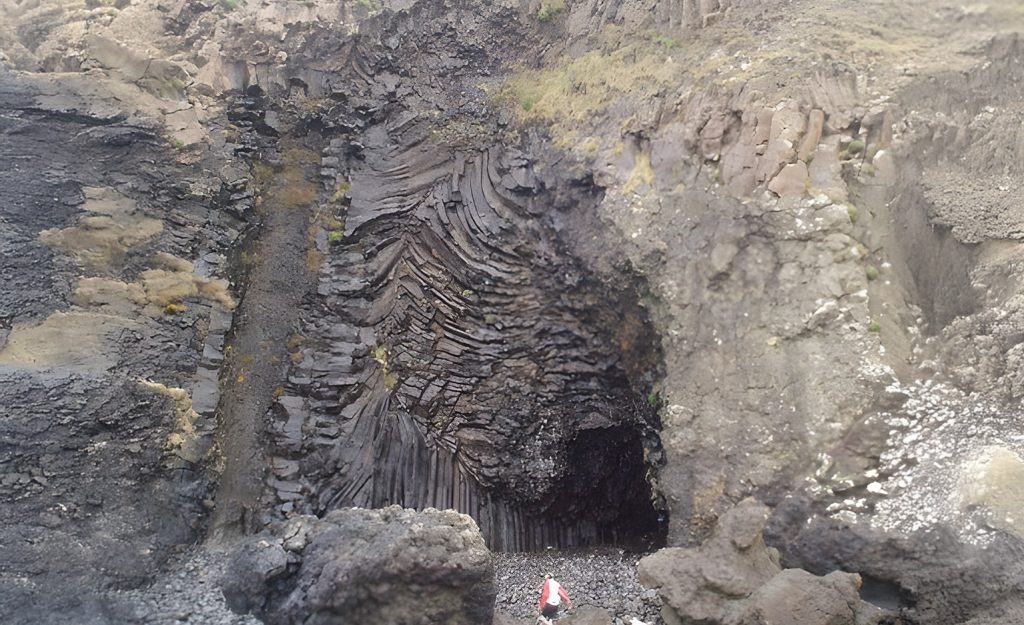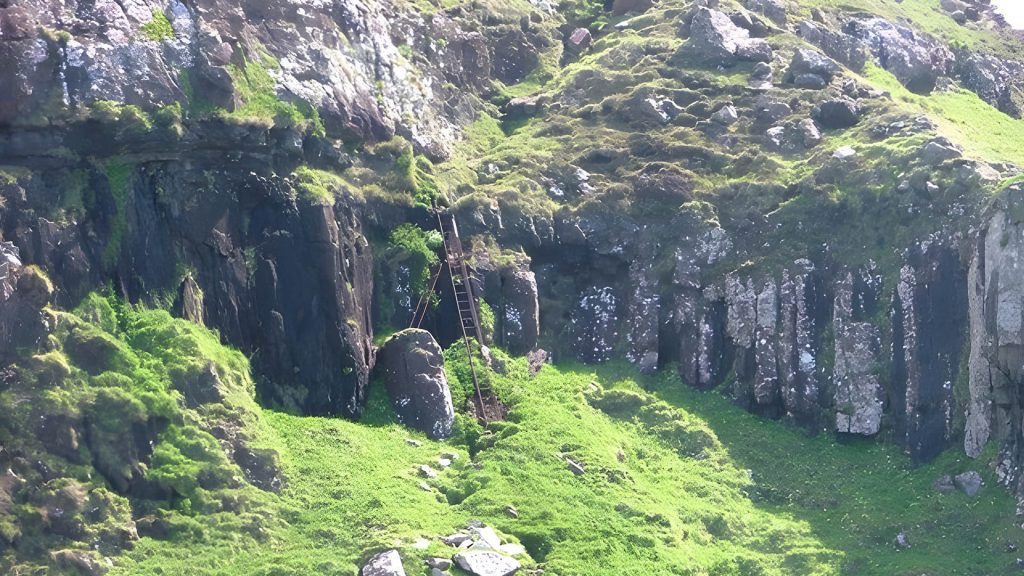The Isle of Mull is a land of dramatic landscapes, ancient history, and raw, untamed beauty. For the intrepid visitor, one of its most rewarding and challenging adventures is the journey to the Burg and the magnificent MacCulloch’s Fossil Tree. This detailed guide is aimed at helping you plan and prepare for a trip to this truly unique geological wonder.
What is the Burg and the Fossil Tree?
The Burg is a remote, spectacular peninsula on the west coast of Mull, owned by the National Trust for Scotland. It’s a place where you can feel the immense power of nature and history. The name itself, “Burg,” comes from the Old Norse word for “fort,” and evidence of an Iron Age fort, Dun Bhuirg, can still be seen on the headland. The area is a designated National Scenic Area and a Site of Special Scientific Interest, rich with unique plant life, a herd of wild goats, and a variety of birds including eagles.
MacCulloch’s Fossil Tree is the star attraction of the Burg. It’s not a petrified tree, but rather the impression of a massive, ancient tree trunk embedded vertically in a basalt cliff face. The tree was a conifer, similar to a modern cypress, and stood here approximately 50 to 60 million years ago. During a period of intense volcanic activity, a flow of hot lava surrounded the tree, turning it to charcoal and preserving its cast in the cooling volcanic rock. The fossil is a stunning testament to Mull’s fiery geological past.

Planning Your Walk
The walk to the Fossil Tree is tough. It is not a gentle stroll. This challenging, all-day hike requires proper preparation. The round trip is about 17 km (10 miles), so you should allow at least 6 to 8 hours for the journey.
Getting Started
The official car park is located beyond Tiroran. It is crucial to park here. You are not permitted to drive past this point. As you begin, the trail will pass by old ruined townships and coffin cairns. You will also see the remains of the Iron Age fort, Dun Bhuirg. In addition, you will be treated to breathtaking coastal views of Loch Scridain and the nearby islands of Ulva and Staffa.
The Final Approach
The coastal scenery becomes increasingly dramatic, with a range of hexagonal basalt formations on the shoreline below. You can reach this section by descending a grassy slope. This is where you will find the spectacular geological feature of a wheel. This impressive formation has a hollow in its center like a bowl. It is a clear sign that you are on the final stretch of the trail.
From this point on, the path threads through fallen boulders and runs close to the edge of the drop before descending to reach the top of a steep iron ladder attached to the cliff face. This ladder is not suitable for dogs or for anyone with a fear of heights.
After you have descended the ladder, the trail continues along the tidal shoreline to the final destination, the Fossil Tree.

Essential Tips for a Safe and Enjoying Trip
- Check the Tide Times: This is the most important piece of advice. A high tide will make the final section of the walk impassable and dangerous.
- Wear Appropriate Footwear: The trail is rough, rocky, and can be muddy. Sturdy waterproof hiking boots with good ankle support are a must.
- Pack for All Weathers: Mull’s weather is famously unpredictable. Bring waterproofs, extra layers, and a hat, even on a sunny day.
- Carry Food and Water: There are no facilities on this trail. Carry enough food and drink for a full day’s hike.
- Be Wildlife Aware: Keep an eye out for red deer, otters, and the resident herd of wild goats. If you have a dog, be aware that they cannot navigate the ladder. They must also be kept on a lead to protect grazing livestock and wildlife.
- Consider a Guided Walk: If you are unsure about the route, several local guides offer trips. They can provide a deeper understanding of the geology and history. This can be a great way to ensure a safe and informative journey.
A trip to the Burg and MacCulloch’s Fossil Tree is a significant undertaking, but for those who are prepared, it is an unforgettable experience. The sense of accomplishment and the sheer geological spectacle of the fossil make it a highlight for any adventurous visitor to the Isle of Mull.

